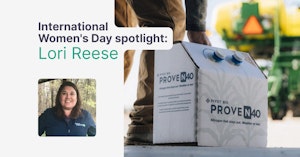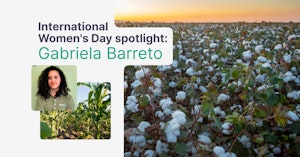While technology in agriculture has advanced in leaps and bounds, success in agriculture still often depends on one big, uncontrollable factor: the weather. While we can’t control the weather, being aware of the historic & forecast weather data is key for farmers mitigating potential damage or maximizing potential upside of a weather event.
Isn’t Weather data a solved problem?
We thought weather data was solved. There are hundreds of weather APIs on the market and Weather data has been used in nearly every industry for decades. Then we spoke with customers and realized that they had major issues with working with Weather Data for Food & Agriculture applications. So, we built Leaf's Weather service to provide a simple, powerful API that unifies data from all major weather data sources and directly addresses the needs of food & agriculture.
What we heard
- Weather data is trust.
- Weather information is one of the first things agricultural customers see in an app and they can validate it instantly. If it is wrong, trust is lost.
- Accuracy is hyper local.
- Weather models will be chosen for accuracy on a state by state basis. Compatibility with multiple models is a must.
- Redundancy is key.
- Weather data services are not always reliable, and compatibility with multiple backup sources is important.
- Flexibility.
- Most Weather services require significant post processing on the user's side to hit the use case.
- Business model.
- Weather data services are typically usage based, but the consumption metrics are hard for business to forecast. Prices seem to increase randomly each year.
How we fix this
Leaf's API now contains a wide variety of Weather Data history & forecast models in hourly and daily weather variables. All of these variables can be provided at the field-level, creating weather data that is as accurate as possible.
Variables include: |
Weather variables are available |
|---|---|
| from the following models: | |
· Temperature |
· ICON (Germany) |
· Humidity |
· GFS (USA) |
· Wind |
· Arpege & Arome (France) |
· Precipitation |
· IFS (EU) |
· Clouds |
· MET Nordic (Norway) |
· Many more |
Variables include:
· Temperature
· Humidity
· Wind
· Precipitation
· Clouds
· Many more
Weather variables are available from the following models:
· ICON (Germany)
· GFS (USA)
· Arpege & Arome (France)
· IFS (EU)
· MET Nordic (Norway)
Leaf Weather combines local (1km resolution) and global (11km) weather models from national weather services to create the best forecast for every location on earth. Leaf Weather is always up to date, with the continuously correct weather forecast updated every hour at 1km resolution. The weather models use real-time measurements, airplane data, buoys, rain radar and satellite observations for predictions. A particular data source and weather model can be selected for a field, or multiple can be used at the same time to create an aggregated result.
Leaf's Weather service is available as a standalone service that accepts coordinates and returns weather data for that location. Leaf's Weather service is also integrated with Leaf's Field Boundary service, so you can get field level weather data by Field ID.
How is the information actionable?
Up to now, it has been difficult for technology developers to access reliable weather data at field level, which is why it has not been widely accessible to those who need it most: farmers and their advisors. With Leaf Weather this all changes, and developers of apps, platforms and other software, now have this information within easy reach. With having all major weather models accessible through the same API, reliability and accuracy issues are a thing of the past. Some models are preferred in specific regions, while a different model might be seen as more accurate in neighboring regions; with Leaf Weather having to choose between models is a thing of the past.
As Leaf Weather offers the actual data through its API, instead of just visualizing the overview. Leaf clients can use this data, in combination with other data in their system if desired, to create services such as:
- Sheep grazier alerts when very cold, wet and windy weather is forecasted in fields where sheep are currently grazing.
- Fungicide warning when wet weather is predicted during certain parts of the year, for fields with a specific crop planted.
- Fertility alerts when precipitation is expected in a field planted with a crop that hasn’t received its full dose of fertilizer for the season yet - depending on crop and crop stage for a specific field.
- Or any other alert that utilizes stand-alone weather data, or in combination with other field-level data they might have available.
A reliable weather API has been raised as a priority by so many of our clients over the past year, that I’m confident that Leaf Weather will have a huge immediate impact in the agtech industry and I can’t wait to see which new and novel use cases will be created.
What comes next?
Leaf's Weather service already includes 7 models and will soon include compatibility with more 3rd party weather providers. This will bring even more flexibility to choosing weather providers. In the meantime, reach out to your Leaf Customer Success representative for information on how to get started with Leaf Weather!





